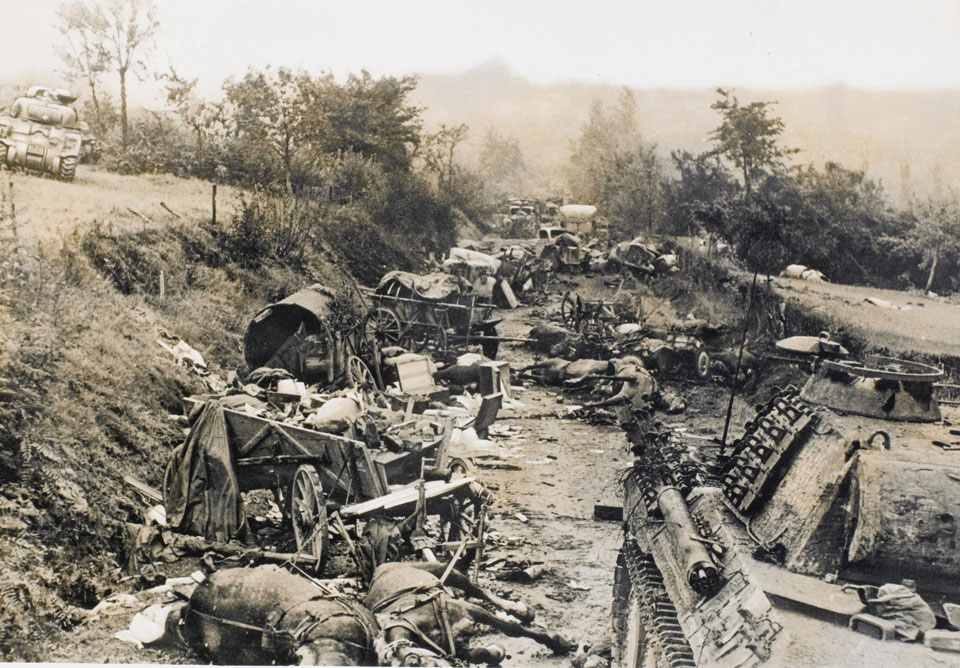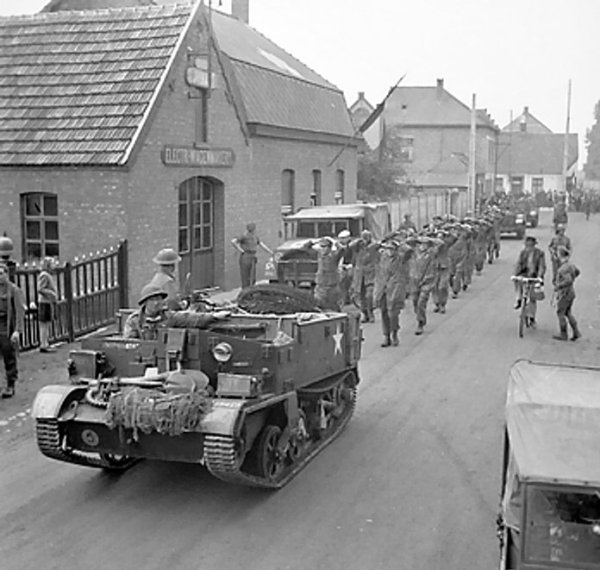
53 (Welsh) Infantry Division (UK) All Listings
Second World War 1939 The Territorial Army and the 53rd (Welsh) Division, commanded by Major-General Bevil Wilson [9] serving under Western Command, was mobilised on 1 September 1939, [10] the day the German Army invaded Poland, and two days later the Second World War officially began.

British soldier of the 53rd (Welsh) Infantry Division using a swastika
The 53rd (Welsh) Infantry Division was an infantry division of the British Army that fought in both the First and Second World Wars.

Infantry and universal carriers of 53rd (Welsh) Division passing
1st Bn. The Manchester Regiment (6) Headquarters, 53rd (Welsh) Divisional Royal Artillery 81st (Welsh) Field Regiment, Royal Artillery 83rd (Welsh) Field Regiment, Royal Artillery 133rd (Welsh) Field Regiment, Royal Artillery 71st Anti-Tank Regiment, Royal Artillery (7) 116th Light Anti-Aircraft Regiment, Royal Artillery (8)

53rd (Welsh) Infantry Division (UK) in Alpen
Red crown and dragon : 53rd Welsh Division in North-West Europe, 1944-1945 (London : Tom Donovan Publishing, 1996) 224 p. Divisional Engineers. John H. Roberts. Welsh bridges to the Elbe : the story of the Royal Engineers - 53rd (Welsh) Division, bridge builders of the Northern France and North-West Europe campaign (Oxford : Boldacre, 2000) 277 p.

53rd (Welsh) Infantry Division (UK) in Alpen
The 53rd (Welsh) Infantry Division was an infantry division of the British Army that fought in both World War I and World War II.Originally raised in 1908 as the Welsh Division, part of the Territorial Force, the division saw service in World War I, being designated 53rd (Welsh) Division in 1915, and fought at Gallipoli and in the Middle East.Remaining active in the Territorial Army during the.

The History of the 53rd Welsh Division in Grelly Italia
1915 King George V inspected the Division on 11 February 1915. The Division moved to Bedford in May. On 2 July the Division was ordered to refit for service in the Mediterranean. Leaving the artillery and train behind, the rest of the Division left 14-19 July and embarked at Devonport.

THE 53RD (WELSH) DIVISION CYCLIST COMPANY IN EGYPT & PALESTINE 1916
The British 53rd (Welsh) Infantry Division was a Territorial Army division that fought in both World Wars. During the First World War the division fought at Gallipoli and in the Middle East. Remaining active during the interwar years as a peace-time formation, the division again saw action in the Second World War, fighting in North-West Europe. It was temporarily disbanded at the end of the.

badge, formation, 53rd (Welsh) Infantry Division (INS 5443)
53rd Welsh Division landed in Normandy on 28 June as one of 'Monty's Green Divisions' and was placed under command of XII Corps now defending the Odon Valley position and was held in reserve for Operation Epsom, the drive to Hill 112.

The road to Chambois cleared by the 53rd (Welsh) Division, 2125 August
The 53rd (Welsh) Infantry Division was an infantry division of the British Army that fought in both the First and Second World Wars.Originally raised in 1908 as the Welsh Division, part of the Territorial Force (TF), the division saw service in First World War, being designated 53rd (Welsh) Division in mid-1915, and fought in the Gallipoli Campaign and in the Middle East.

53rd (Welsh) Infantry Division (UK) on the outskirts of Ochtrup,
The Welch Regiment. 2nd Bn. The Monmouthshire Regiment. Divisional Troops. 53rd Reconnaissance Regiment, Royal Armoured Corps. 1st Bn. The Manchester Regiment. 81st (Welsh) Field Regiment, Royal Artillery. 83rd (Welsh) Field Regiment, Royal Artillery. 133rd (Welsh) Field Regiment, Royal Artillery. 71st Anti-Tank Regiment, Royal Artillery.

British 53rd Welsh Division Churchill AVRE in Geffen, the Netherlands
Monty's plan to blast his way through the Reichswald was delayed, first by the necessity of opening Antwerp and the Scheldt Estuary to seaborne traffic, then by the Battle of the Bulge, which temporarily took 30th Corps away from the Reichs-wald to backstop the Americans on the Meuse River.

53rd (Welsh) Division. British Friends of Normandy
The 53rd (Welsh) Division, mostly from mid and north Wales, saw action in the Mediterranean and Middle East. Yet, while the 38th (Welsh) Division are remembered with a sculpture of a Welsh.

[Photo] Men of 158 Brigade, UK 53rd (Welsh) Division escorting German
Division IV. Central Catholic 28, Hamilton Christian Academy 6. Covenant Christian 35, Delta Charter 6. Delhi Charter 26, Slaughter 22. Glenbrook 49, Sacred Heart 12. Hanson Memorial 34, St. John.

St David's Day, Tenglemans Factory, West Germany 1946. 6 RWF, 53rd
53rd (Welsh) Infantry Division. Order of battle - June 1944 - Battle of Normandy. Commander: Major General R. K. Ross. 71st Infantry Brigade: Brigadier V. Blomfield - 1st Battalion, East Lancashire Regiment. - 53rd Regiment, Reconnaissance Corps. Artillery - 81st Field Regiment, Royal Artillery

THE 53RD (WELSH) DIVISION CYCLIST COMPANY IN EGYPT & PALESTINE 1916
Germany Invades Poland 53 rd Welsh Division mobilised BBC Broadcasting House London 3u003csupu003erdu003c/supu003e September 1939u003cbru003e (11:15 am GMT) Start of Word War II The English Prime Minister Neville Chamberlain declares war on Germany via the BBC Home Service South Wales By 6u003csupu003ethu003c/supu003e September 1939

Soldiers from 53rd (Welsh) Division advancing through Normandy in 1944
53RD WELSH DIVISION 5 joining 158th Brigade in the city following a head long dash down the steeply banked railway, under the sights of German guns. The remainder of the Skins pushed along the Hintham road with the 6 th RWF into the city. Later that afternoon the 6th RWF made the assault across the lock gates, supported by the Skins' tanks and the